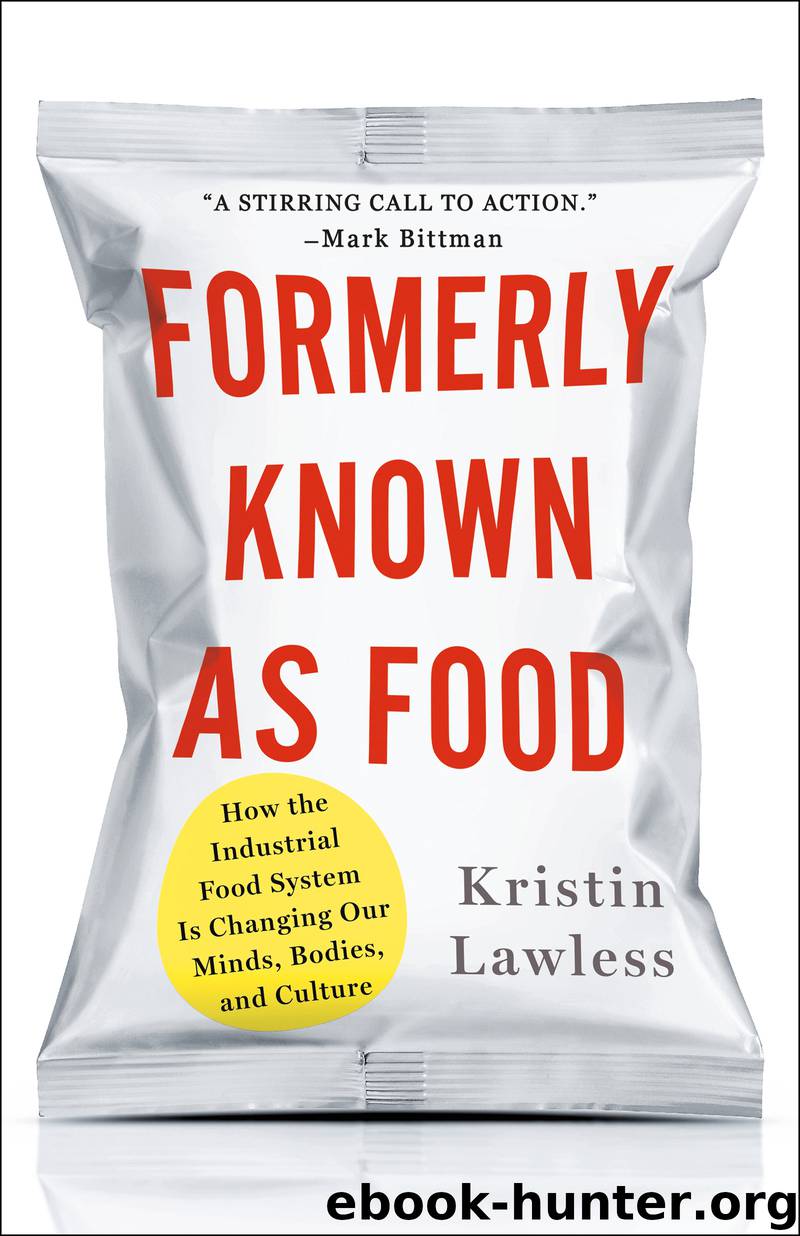Formerly Known As Food by Kristin Lawless

Author:Kristin Lawless
Language: eng
Format: epub
Publisher: St. Martin's Press
7
Our “Safe” Exposure to Toxic Chemicals
How the Regulatory Agencies Are Failing to Protect Our Health
There was a big news story in July 2017 in the Well section of The New York Times with a headline that read: “The Chemicals in Your Mac and Cheese.” Researchers found plasticizers, known as phthalates, in the popular kids food. Then, less than two weeks later, the Times’s Food section reported that traces of the herbicide glyphosate, the main ingredient in Roundup, had been found in Ben & Jerry’s ice cream.1 Several people asked me about it: Should we be worried? Yes, we should be worried, but not just because researchers found plasticizers in our mac and cheese or herbicide in our ice cream. We should be worried because these kinds of environmental chemical contaminants are literally everywhere, lurking in nearly all our foods. We know they exist in these two foods because researchers specifically looked for them. Roughly nine thousand environmental chemicals on the market end up in our foods, including food additives, colorings, flavorings, pesticides, and food-packaging chemicals.2 They are ever present in our environment and in our bodies, and the regulatory agencies whose job is to test and monitor them are failing to protect us. In dozens of interviews with scientists, researchers, and professors, I have identified major roadblocks to the fair and impartial regulation of environmental chemicals that we are all in direct contact with on a day-to-day basis, especially those in our foods.
Two main agencies are responsible for regulating all the environmental chemicals in our foods: the Food and Drug Administration (FDA) oversees all food and food ingredients on the market (except meat, poultry, and certain processed egg products, which are overseen by the U.S. Department of Agriculture), and the Environmental Protection Agency (EPA) regulates pesticides, herbicides, insecticides, and fungicides used in food production. But the laws governing the agencies have myriad problems, as do the agencies themselves. As a result, we are not being protected from the essentially unregulated industries that manufacture all the substances that end up in our food and in our bodies.
Chemical Manufacturers Provide Their Own Data
One of the fundamental flaws in the design of the regulatory system is that the manufacturers of the pesticides, emulsifiers, and plasticizers that are added to our food supply, food products, and food packaging provide their own data conducted by scientists that they hire to perform safety testing on their products. Let me repeat that: The manufacturers of the substances that lace our food supply and make their way into our bodies provide the safety data and their own evaluations to the regulatory agencies for review. In the case of pesticides, an EPA spokesperson told me that this practice is intended to save taxpayers money on expensive research and scientific studies. “Congress placed this obligation on the pesticide registrant rather than requiring taxpayers [to] fund data development,” the representative said. Most people would assume that the governmental agencies are doing independent testing to ensure the safety of our foods and other products in contact with our foods.
Download
This site does not store any files on its server. We only index and link to content provided by other sites. Please contact the content providers to delete copyright contents if any and email us, we'll remove relevant links or contents immediately.
The Bone Broth Miracle: How an Ancient Remedy Can Improve Health, Fight Aging, and Boost Beauty by Ariane Resnick(16445)
How to Be a Bawse: A Guide to Conquering Life by Lilly Singh(7154)
The Fat Loss Plan by Joe Wicks(4619)
The Ultimate Bodybuilding Cookbook by Kendall Lou Schmidt(3706)
A Jewish Baker's Pastry Secrets: Recipes from a New York Baking Legend for Strudel, Stollen, Danishes, Puff Pastry, and More by George Greenstein(3449)
The French Women Don't Get Fat Cookbook by Mireille Guiliano(3410)
Better Homes and Gardens New Cookbook by Better Homes & Gardens(3368)
Super Food Family Classics by Jamie Oliver(3245)
Dinner in an Instant by Melissa Clark(3001)
Bread Revolution by Peter Reinhart(2987)
Tom Kerridge's Dopamine Diet: My low-carb, stay-happy way to lose weight by Kerridge Tom(2951)
Body Love by Kelly LeVeque(2904)
Ottolenghi - The Cookbook by Yotam Ottolenghi(2733)
Flavor Flours by Alice Medrich(2641)
The Fat Chance Cookbook by Robert H. Lustig(2641)
Tone Your Tummy Type by Denise Austin(2631)
Oh She Glows Every Day by Angela Liddon(2627)
LL Cool J's Platinum 360 Diet and Lifestyle by LL Cool J(2581)
The Kitchen Counter Cooking School by Kathleen Flinn(2393)
